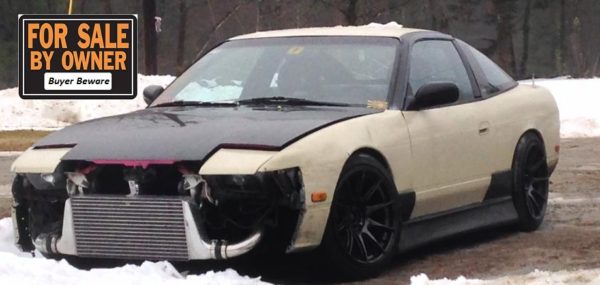
Hello, fellow car enthusiasts! Today, I would like to go over some key points for purchasing a lightly modified to heavily modified car. Relieving some of the stresses of these purchases can make for a more entertaining car hunt. This post will be geared towards a turnkey purchase, requiring little work when first purchased. We will also cover purchasing basics.
Take Your Time
When purchasing a modified car, it is key to take the process seriously. When dealing with modified cars of any sort, whether it be a show or a track car, you need to understand what you are buying and what risks may come along with it. Many times, first, second, or third-time purchases can end in disaster. It is very easy to find a car you want, but be aware that it may have flaws. When searching locally, it’s best to be cautious. Letting your desire get the best of you can result in a bad purchase.
Research and Know the Car
Going into a purchase blind is not a good idea and a common mistake. When you do find a car you want, approach it with every question you can think of—really cover everything. A little internet researching can return great results for problems with a certain car, mod, or part. When dealing with a car producing large horse power numbers on a stock rotating assembly and valve train, you should always know what it is capable of. Forums and even performance shop pages and websites list all sorts of reliable information about builds.
Understand the Vehicle’s Current Modifications
People can hide poor work. Wiring nests can be hidden behind dashes, poor engine tuning can wreak havoc, and a bad suspension setup can be dangerous. Have a clear understanding of the modifications done to the car. Sometimes internet listings can stretch the truth or exclude work done. Car enthusiasts do a lot of work at home. This is not a bad thing, some of us are more talented than others and can produce amazing work. When you meet the owner, ask who, where, and when these things were done. These cars can change owners frequently and by the time the current owner has it, sometimes there’s little known information left about the car.
If you are dealing with someone who has done most, if not all of the work themselves, test the owner on their confidence and experience. If the work was done by a shop, get receipts and any information you can from the owner. Don’t trust vague statements made by the owners about parts. If this is a high dollar car, I would not hesitate to contact the shop about work performed. Most places are happy to tell you about the craftsmanship of their work, or about how much trouble the owner and project were.
Inspect the Car & It’s Modifications
When you approach a car like this in person for the first time, see if it has been running. Look at the temperature gauge, natural bay temperature, or even use a hand feel around the engine bay. Some valve train issues can be hidden with a warm engine, along with any open loop / cold start issues. While you are in the engine bay, look at connectors. Track-used cars can sometimes go through engines often and things like hoses, electrical connectors, and clamps can wear out from abuse or simply from an accident or frequent interaction. Engine wiring for swaps and electrical part addition can be hidden and bundled up in random places throughout the car.
Familiarize yourself with the chassis you are looking at. Make sure the suspension is setup properly for the cars stance. Many strict show cars can look like the next stance trend, but the method used to reach the photogenic look can render your dream purchase dangerous or un-drivable.
Go For a Test Drive
The trusty test drive can blind you with excitement before you get a chance to test this cars capabilities. If you can, test drive without the owner; however, this may not be easy. Often times, quirks will be explained while driving along with instructions for driving methods. For example, say a car with a poor tune is running too rich on low RPM, partial throttle. The owner may tell you to ease into the throttle or choose a different gear to avoid the scenario. Something like this is certainly not a deal breaker, but good to be aware of.
While you are test driving, actually test things. If you are test driving a car with power modifications, listen for engine noise like detonation at low RPM or reading an air fuel gauge closely. If the owner has an aftermarket ECU, data logs are great to look at. Regular used car test drive techniques can tell a lot about a car’s condition.
Be Prepared for Modifications on the Modifications
Buying a modified car is complicated. After your purchase, expect to have to fine tune, adjust, or even fix old mistakes. In the end, the idea is to have you driving your modified monster down the street with a grin from ear to ear, and hopefully without lifting a finger of work. Some people don’t have the luxury or space to work in a garage, and sometimes working on a car themselves is just not possible. Keep your options open when looking and don’t let the process become a burden.
Written by Nick Iosua.